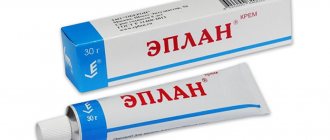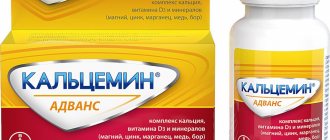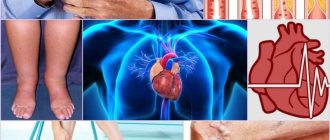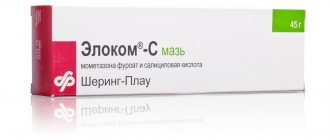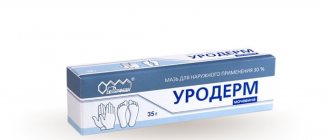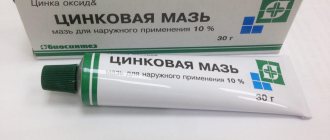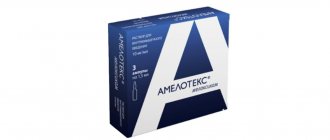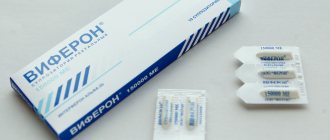To treat psoriasis, neurodermatitis, eczema and other skin diseases, various ointments are used, including those based on hydrocortisone. Such drugs include Lokoid cream. It has a quick effect and is safe for health. Suitable for both adults and children aged 6 months and older. You can buy the product at an affordable price and without a prescription.
Pharmacological properties of the drug Lokoid
Pharmacodynamics . Hydrocortisone 17-butyrate is an active synthetic non-halogenated corticosteroid for topical use. It has a fast-onset anti-inflammatory, anti-edematous, antipruritic effect. The effectiveness is comparable to halogenated GCS. The use of the drug in recommended doses does not cause suppression of the hypothalamic-pituitary-adrenal system. Although the use of the drug in high doses for a long time, especially when applied under occlusive dressings, can lead to an increase in plasma cortisol levels, this is never accompanied by a decrease in the reactivity of the pituitary-adrenal system, and drug withdrawal leads to a rapid normalization of cortisol production. Pharmacokinetics. After application, the active substance accumulates in the epidermis, mainly in the granular layer. The drug absorbed through the skin is metabolized to hydrocortisone and other metabolites directly in the epidermis and subsequently in the liver. Metabolites and a small part of unchanged hydrocortisone are excreted in urine or feces. The dosage form - lipocrem - is characterized by a high content of lipids, which help restore the physiological barrier function of the skin. The drug in the form of lipocrem is intended for use primarily in subacute and chronic diseases with dry skin.
Lokoid cream: description
The drug is a thick, translucent ointment for external use only. The composition includes the active ingredient hydrocortisone in the form of butyrate - a concentration of 1 mg per 1 g or 0.1%. Auxiliary components are a base with petroleum jelly and polyethylene.
The ointment is packaged in aluminum tubes weighing 30 g. It can be stored under normal room conditions at temperatures up to 25 degrees Celsius. It is necessary to exclude access to direct sunlight and also keep it away from children. The ointment can be used within the general shelf life of 5 years from the date of production.
Use of the drug Lokoid
For adults and children (over 6 months of age), a small amount of the drug is applied to the affected area of the skin 1-3 times a day. When positive dynamics appear, the drug is used 1 to 3 times a week. To improve penetration, the drug is applied with massaging movements. In cases of resistant disease, for example, when dense psoriatic plaques are localized in the elbows, knees, Lokoid ointment or cream must be applied under occlusive dressings. In case of weeping skin lesions, it is advisable to use Locoid Crelo cutaneous emulsion under an occlusive dressing. The dose of the drug used during the week should not exceed 30–60 g. The duration of the course of treatment is determined individually and depends on the dynamics of the disease.
Indications
Lokoid is a hormone belonging to the group of glucocorticoids. Use only under close medical supervision. The main indications for use are:
- psoriasis (as an additional therapeutic measure);
- neurodermatitis;
- barley;
- eczema;
- allergic reactions;
- conjunctivitis;
- reaction to insect bites;
- itching of the skin of various nature;
- shock - treatment and preventive measures.
Contraindications to the use of the drug Lokoid
- dermatitis complicated by bacterial (pyoderma, syphilis and tuberculosis), viral (herpes, chickenpox, herpes zoster, genital warts, warts, molluscum contagiosum), fungal and parasitic infections;
- wounds and ulcerative skin lesions;
- perioral dermatitis; atrophic skin lesions;
- rosacea localized in the facial area; acne, ichthyosis, teenage plantar dermatosis, fragility of skin vessels;
- hypersensitivity to the components of the drug or to other corticosteroids;
- age up to 6 months.
Use in pediatrics
The ointment can be prescribed to children from 6 months, but only under the supervision of a doctor. If the product is applied using occlusive dressings or on the skin of the face, the course of therapy should be reduced to a minimum. In this case, the maximum area of the treated cover should be less than 20% of the entire surface.
It should be noted that in children, adrenal suppression may manifest itself more quickly. A decrease in the synthesis of growth hormone is also often observed. If you use the ointment for a long time, it is important to monitor the child’s weight and monitor the concentration of cortisol in the blood, which is only possible with the participation of a doctor.
There is research data according to which children who received 7-8 g of ointment daily for a month did not experience side effects. The adrenal cortex worked normally in all those observed.
Side effects of the drug Lokoid
local reactions (skin and subcutaneous tissue):
- skin atrophy (thinning of the epidermis, telangiectasia, purpura and striae);
- rosacea-like and perioral dermatitis;
- rebound effect, making corticosteroid withdrawal difficult;
- slower wound healing;
- effect on the eyes: increased intraocular pressure and the risk of developing cataracts (if the drug is systematically exposed to the conjunctiva);
- depigmentation, hypertrichosis;
- contact allergy.
Systemic effects . In adults, when GCS is used topically, they are very rare, but they can be serious. With prolonged use of the drug, suppression of the function of the adrenal cortex may occur.
special instructions
The product should not be applied to the area near the eyes (eyelids), as this may lead to the development of glaucoma. If the drug constantly gets on the conjunctiva, this can cause an increase in intraocular pressure.
If dry eyes are severe, hyperkeratosis is observed, the drug is used only in the form of an ointment, lipocrem is also available. The ointment should not be used if atrophic changes in the skin are diagnosed.
It should be remembered that the risk of side effects increases when applied to large areas of the body, as well as during prolonged use.
If the therapeutic effect does not occur within 2 weeks (reception is carried out in a row), therapy should be discontinued and consult a doctor to clarify the diagnosis.
Special instructions for the use of the drug Lokoid
Caution should be applied to the face, genitals and scalp, the skin of which is most sensitive to GCS. The risk of local and systemic side effects increases with high doses and prolonged use of the drug; when used under occlusive dressings and in children (the large surface and thin skin on which the drug is applied make children most sensitive to GCS). The risk of systemic side effects increases when the drug is used together with substances that increase the permeability of the stratum corneum of the skin or the activity of the active substance (for example, propylene glycol). Improper use, bacterial, parasitic, fungal and viral infections can hide or intensify adverse reactions. The risk of side effects increases when using the drug Lokoid lower than when using halogenated steroids. With prolonged use, it is advisable to gradually discontinue the drug in order to prevent a possible exacerbation of the clinical symptoms of the disease. Use in children. The drug can be used in children over 6 months of age. If a corticosteroid is applied to the face or under an occlusive dressing, the duration of treatment should be reduced. In childhood, suppression of adrenal function may develop more quickly. In addition, there may be a decrease in growth hormone excretion. With long-term use of the drug, it is necessary to monitor body weight, height, and cortisol levels in the blood plasma. In control 4-week studies in children who received 30-60 g of Lokoid or 1% hydrocortisone ointment weekly, no dysfunction of the adrenal cortex was detected. Use of the drug during pregnancy and lactation. GCS penetrate the placenta. The effect on the fetus can be especially pronounced when the drug is applied to a significant surface of the skin. There is no data on the amount of hydrocortisone entering breast milk, however, special care must be taken when prescribing the drug during breastfeeding.
Contraindications and side effects
In some cases the drug cannot be used:
- bacterial skin infections;
- viral infectious skin lesions;
- fungal infections;
- syphilis;
- tuberculosis;
- infections associated with parasites;
- skin tumors of various natures, including cancer;
- period after vaccination;
- wounds, ulcers;
- individual intolerance to components;
- all stages of pregnancy;
- feeding period.
The drug is safe for health, but in some cases it can cause allergic reactions, including itching and irritation. They do not require treatment and go away on their own after you stop taking them.
Also, during long-term treatment, systemic side effects are possible. The risks of their occurrence are not as high compared to the use of fluorinated steroids.
Signs of hypercortisolism may occur, including:
- the skin becomes very sensitive;
- wounds and bruises take a long time to heal, poorly;
- menstrual irregularities;
- skin rash;
- increased hair growth;
- general weakness;
- rapid weight gain;
- increase in pressure;
- anxiety, mood disorders;
- depressive states;
- sleep disorders.
Such symptoms appear rarely and only after prolonged use. If at least one of the described effects is detected, you should stop therapy and immediately consult a doctor to prescribe a course of treatment.
Buy Locoid ointment 0.1% 30g in pharmacies
Instructions for use Lokoid ointment 0.1% 30g
Dosage forms ointment 0.1% 30g Group Drugs with glucocorticosteroid activity International nonproprietary name Hydrocortisone Composition Active substance: Hydrocortisone. Manufacturers : Temmler Italy S.r.L (Italy), Yamanouchi Europe B.V. (Netherlands) Pharmacological action Anti-inflammatory, antiallergic, antishock, desensitizing, immunosuppressive, antiexudative, antipruritic. Well absorbed after oral administration. The maximum concentration is reached after 1 hour. Penetrates well through mucous membranes and histohematic barriers. After application to the skin, it accumulates in the epidermis. Intensively metabolized in the liver. The absorbed portion is metabolized in the epidermis and then in the liver. Metabolites and a small part of hydrocortisone are excreted in urine or bile. Inhibits hypersensitivity reactions, proliferative and exudative processes in connective tissue, at the site of inflammation. Reduces local hyperemia and hyperthermia of the skin. It disrupts the synthesis of prostaglandin and the release of macrophage chemotactic factor, inhibits the activation of tissue kinins. Reduces the migration of macrophages and lymphocytes to the site of inflammation. Suppresses alteration, exudation and proliferation. Inhibits the production of collagenase and activates the synthesis of protease inhibitors. Blocks the synthesis and release of histamine and other biologically active substances from sensitized mast cells and basophils, suppresses various stages of immunogenesis without having a mitozostatic effect. Increases the level of glycogen in the liver, inhibits the release of sodium and water, increases potassium, affects protein (causes a negative nitrogen balance due to increased catabolism) and lipid metabolism. Increases the volume of circulating blood, the hydrophilicity of tissues, and increases blood pressure. With long-term use, atrophy of the adrenal cortex develops, the formation of ACTH and thyroid-stimulating hormone of the pituitary gland is inhibited. Side effects: Headache, dizziness, euphoria, insomnia, depression, psychosis; allergic reactions (up to anaphylaxis); with long-term use: edema syndrome, skin itching, hyperpigmentation, convulsions, Cushing's syndrome, decreased glucose tolerance, hyperglycemia, steroid diabetes, adrenal insufficiency, menstrual irregularities, hypokalemia, hypokalemic alkalosis, hyperuricemia (especially in acute leukemia), memory loss , increased intracranial pressure, myopathy, arthralgia, arthropathy, osteoporosis, arterial hypertension, vasculitis, exacerbation of gastric and duodenal ulcers, formation of posterior subcapsular cataracts, glaucoma with possible damage to the optic nerve and increased risk of viral and fungal eye infections, activation of latent foci of infection . With prolonged topical use, especially with impermeable dressings or over large areas of skin: systemic side effects, local irritation may occur. Indications for use : Seasonal allergic rhinitis, severe attack of bronchial asthma, asthmatic condition, serum sickness, hypersensitivity reactions to drug administration; emergency conditions - spontaneous and orthostatic hypotension, collapse in Addison's disease, myocardial infarction, hemorrhagic stroke, Morgagni-Adams-Stokes syndrome, coma due to cerebrovascular accident and inflammatory diseases of the brain, hypothyroid and hepatic coma, acute adrenal insufficiency (Waterhouse-Friderichsen syndrome) , multiple bleeding, acute liver failure in case of poisoning, swelling of the larynx in allergic and inflammatory lesions, burns and injuries, poisoning with vitamin D, strong acids, organophosphates, quinine, chlorine, post-transfusion complications, Mendelssohn's syndrome, snake and scorpion bites, anaphylactic, hemorrhagic , cardiogenic and traumatic shocks; endocrine diseases - primary or secondary adrenal insufficiency (preferably natural cortisone and hydrocortisone, synthetic analogues should be used in combination with mineralocorticoids), adrenogenital syndrome with sodium loss, thyroiditis, hypercalcemia associated with cancer; rheumatic diseases - psoriatic, rheumatoid, juvenile rheumatoid and acute gouty arthritis, ankylosing spondylitis, acute and subacute bursitis, glenohumeral periarthritis, etc., systemic lupus erythematosus, acute rheumatic carditis, dermatomyositis; inflammatory and allergic skin diseases, incl. eczema, dermatitis: allergic and atopic, bullous herpetiformis, exfoliative, seborrheic, contact; itchy dermatoses, pemphigus, Stevens-Johnson syndrome, mycosis fungoides, psoriasis; in ophthalmology: allergic conjunctivitis, blepharitis, eyelid dermatitis, keratitis, corneal ulcer, herpes zoster, iritis, iridocyclitis, chorioretinitis, inflammation of the anterior segment, diffuse posterior uveitis and choroiditis, optic neuritis, sympathetic ophthalmia, condition after surgery; sarcoidosis, Loeffler's syndrome, berylliosis, fulminant or disseminated pulmonary tuberculosis, aspiration pneumonitis; idiopathic thrombocytopenic purpura in adults, autoimmune hemolytic and congenital hypoplastic anemia, erythroblastopenia, palliative therapy of leukemia and lymphomas in adults, acute leukemia in children; nephrotic syndrome without signs of uremia (to reduce proteinuria and induce diuresis), severe exacerbations of ulcerative colitis and Crohn's disease, tuberculous meningitis with subarachnoid block, trichinosis with neurological and myocardial manifestations, acute manifestations of multiple sclerosis, disseminated lung cancer (additional therapy). Intra-articular and periarticular administration (hydrocortisone acetate): reactive synovitis (including with deforming osteoarthritis), rheumatoid arthritis, acute and subacute bursitis, acute gouty arthritis, epicondylitis, acute nonspecific tenosynovitis, carpal tunnel syndrome, post-traumatic osteoarthritis. I/C for keloids, localized hypertrophic, infiltrative, inflammatory lesions, lichen planus, psoriatic plaques, granuloma annulare, neurodermatitis, discoid lupus erythematosus, diabetic lipid necrobiosis, alopecia areata, cystic tumors of the aponeurosis and tendons; differential diagnosis of idiopathic and drug-induced leukopenia. Contraindications Hypersensitivity, systemic fungal infections, acute psychoses, severe forms of arterial hypertension, severe decompensated diabetes mellitus, gastric and duodenal ulcers in the acute stage, infectious (tuberculosis, mycosis, viral diseases, syphilis, etc.) and ulcerative skin lesions, wounds, tumor diseases of the skin, osteoporosis, Cushing's disease, thrombophilic conditions, renal failure, herpetic fever, viral and fungal eye diseases, ocular tuberculosis, trachoma, damage to the ocular epithelium, AIDS, previous arthroplasty, conditions after intestinal anastomosis, pregnancy, breast feeding, younger children. Overdose No information available. Interaction Barbiturates, antiepileptics and antihistamines reduce effectiveness. NSAIDs increase the risk of ulceration in the gastrointestinal tract, paracetamol - hepatotoxicity. Reduces the activity of salicylates, antidiabetic agents, increases - anticoagulants. Cardiac glycosides and non-potassium-sparing diuretics potentiate hypokalemia, anabolic steroids increase tissue hydrophilicity. When combined with amphotericin B, the development of dilated myocardial damage and heart failure is possible. Special instructions During the treatment period, vaccination is not recommended. Administration of large doses is permissible for no more than 48-72 hours. Intra-articular administration should be carried out no more than once every 3 weeks. During long-term therapy, monitoring of potassium levels in the blood and regular ECG studies are recommended. To prevent the development of secondary hypocortisolism caused by discontinuation of treatment, the dose should be reduced gradually. Glucocorticoids can mask some manifestations of the infectious process; new infections may occur due to a decrease in resistance. When treated with corticosteroids or their combination with other drugs that suppress cellular, humoral immunity or neutrophil function, various viral, bacterial, fungal, protozoal infections and helminthic infestations that were previously latent may appear. The risk of infection and its more severe course increases in proportion to the increase in the dose of the drug. Storage conditions At a temperature of 5-15 °C.
Similar drugs:
- Dexamethasone Solution for intravenous and intramuscular administration
- Calcium gluconate Chewable tablets
- Pulmicort Suspension for inhalation
- Cetrine Oral tablets
- Sodium cromoglicate Substance-powder
- Diprospan Solution for injection
- Mometasone furoate Substance-powder
- L-cet Oral tablets
- Dexamethasone Solution for injection
- Adrenaline (Adrenaline) Solution for injection
** The Drug Directory is intended for informational purposes only. For more complete information, please refer to the manufacturer's instructions. Do not self-medicate; Before starting to use Locoid Crelo, you should consult a doctor. EUROLAB is not responsible for the consequences caused by the use of information posted on the portal. Any information on the site does not replace medical advice and cannot serve as a guarantee of the positive effect of the drug.
Are you interested in the drug Locoid Crelo? Do you want to know more detailed information or do you need a doctor's examination? Or do you need an inspection? You can make an appointment with a doctor - the Euro lab is always at your service! The best doctors will examine you, advise you, provide the necessary assistance and make a diagnosis. You can also call a doctor at home . Euro lab clinic is open for you around the clock.
** Attention! The information presented in this medication guide is intended for medical professionals and should not be used as a basis for self-medication. The description of the drug Lokoid Crelo is provided for informational purposes only and is not intended for prescribing treatment without the participation of a doctor. Patients need to consult a specialist!
If you are interested in any other drugs and medications, their descriptions and instructions for use, information about the composition and form of release, indications for use and side effects, methods of use, prices and reviews of drugs, or you have any other questions and suggestions - write to us, we will definitely try to help you.
